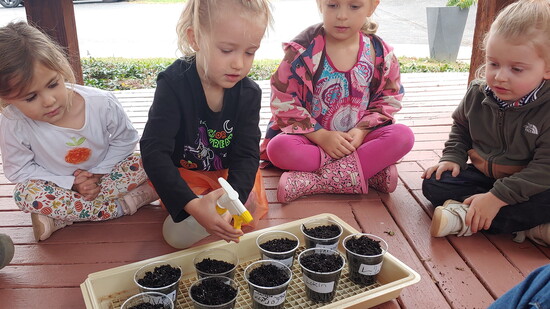Nature and sustainability are so important to the foundation of Children’s Meeting House Montessori School, that it’s central to their objective: “To be the school of choice for sustainably delivering high-quality Montessori education through applied learning utilizing natural settings.”
Located near historic Loveland, situated on 7+ acres of thick woods and lush meadows (surrounded by hundreds more), the focus comes naturally. CMH offers preschool through middle school programs, and is the only Montessori school with a full staff of nature enthusiasts—including an on-site naturalist.
But just how does CMH instill a lifelong sense of environmental stewardship? Kids dig in and get their hands dirty!
CMHSchool.com | 927 O’Bannonville Rd, Loveland | 513.683.4757
01 AGRICULTURE
Students utilize a variety of methods to produce fresh vegetables and leafy greens for themselves and their classmates. They learn the complete process of growing vegetation from seed—teaching them the value of whole foods, the lifecycle of plants, and their contribution to greater ecosystems. They celebrate their successes with “salad parties,” where they actually get to taste the fruits of their labor!
02 COMPOSTING
Each classroom has a compost bin that is managed daily by a student, then added to the larger, school-wide system. Through this process, students learn what makes something organic—and the importance of composting to keep organic materials out of landfills, plus its impact on community health. The composting product (humus), in turn, goes back into individual classroom garden beds to enrich the soil.
03 RECYCLING/REUSE
Every classroom has a recycling bin that students are responsible for managing day-to-day, which is then taken to the school’s larger Rumpke recycling bins. Old glue sticks, markers, pens, Styrofoam and other materials are saved and sorted into drop-off collections for the Cincinnati Recycling and Reuse Hub. Also, community members are encouraged to contribute to the school’s collection, emphasizing the students’ greater impact.
04 NATURE PRACTICES
Focusing on natural balances, stewardship, and the 7 Principles of “Leave No Trace,” students gain an appreciation for the outdoors by being in them—often. They tend and protect CMH and its neighboring properties, learn about native flora and fauna, and how to protect them from invasives with hands-on work like ivy and honeysuckle pulls. There are weekly hikes, creek walks, sledding adventures, and more.
